![[DEEP DIVE] Top Revenue Streams for Membership Business Models](https://www.brilliantdirectories.com/wp-content/uploads/2021/03/Top-Revenue-Streams-For-Membership-Business-Models.jpg?hero-image)
This Tip of the Week covers topics including:
- 4:16 – Free eBook: Monetizing Your Directory – DirectoryToolkit.com/monetize
- 4:50 – 3 Business Model Questions
- 6:04 – What is Profitability?
- 7:37 – Growth Ceiling – Maximum Revenue
- 11:00 – 3 C’s of Increased Revenue
- 14:40 – 3 Customer Funnel Focuses
- 16:58 – 6 Easy Ways To Reduce Cancellations And Keep Members Happy – More Info
- 17:24 – Net Negative Churn
- 19:37 – Tiered Membership Levels
- 25:54 – 3D Multi-Axis Monetization
- 32:34 – Monetization Channels
- 38:36 – Presentation Summary
This is a segment from Webinar Wednesday 104, recorded live on December 16, 2020.

 AI-Generated Transcript – Please excuse any inaccuracies
AI-Generated Transcript – Please excuse any inaccuracies
Free eBook: Monetizing Your Directory – DirectoryToolkit.com/monetize (00:04:16)
- The information being presented will be available for download in a convenient Ebook format at any time, allowing individuals to review and reference the material at their convenience (00:04:16).
- The eBook is designed as a combination of a part eBook and part workbook, intended to prompt readers to think critically about the topics discussed and provide a space for them to write in their answers to questions related to the subject matter (00:04:25).
- The eBook can be downloaded from the website directorytoolkit.com/monetize, and individuals can also scan a code with their phone camera to immediately access and download the eBook (00:04:38).
- The eBook is intended to guide readers in thinking about and applying the concepts discussed, by posing questions and prompting them to record their thoughts and answers in the workbook section (00:04:32).
- The resource is available for everyone, and its purpose is to facilitate a deeper understanding of the topics covered, specifically monetizing a directory (00:04:23).
3 Business Model Questions (00:04:50)
- The first question to consider when creating a directory business model is identifying the niche or audience, which is usually the first thing that people determine, and this is often considered the easy part (00:04:50).
- Once the target customers are identified, three business model questions need to be asked, including what to offer the customer, how to create the value proposition, and why the business will generate revenue (00:05:07).
- Patrick previously discussed the first two items, including the customer avatar and testing the value provided to the customer, to determine if there is a market for the business and if it is a viable business to pursue (00:05:18).
- The execution of profit in a directory business comes from the third question, which is why the business makes money, and this will be the focus of the discussion (00:05:48).
- To increase revenue, every directory business has to focus on three key things, which will be explained in the discussion, and this is crucial for the success of the business (00:05:58).
What is Profitability? (00:06:04)
- The primary goal of every successful directory is to be profitable, which involves having high revenue, low expenses, and creating as high a profit as possible (00:06:04).
- To achieve profitability, it is essential to think about the desired level of profit from the directory, whether to have a high profit now or to reinvest it back into the company, and to consider personal financial circumstances, such as having another job or relying on the directory as a primary resource (00:06:25).
- Some large companies, including Airbnb, Dropbox, Peloton, Pinterest, Uber, and Zillow, did not make a profit in 2019, instead focusing on growth and reinvesting their revenue back into their businesses (00:06:41).
- Reducing expenses or reinvesting profits back into the business can have a significant impact on the company’s current and future profitability, and it is crucial to find a balance between the two (00:07:06).
- The discussion will focus on the revenue portion of the business, exploring ways to increase revenue, as this is a key concern for many people who are trying to reduce expenses and grow their businesses (00:07:22).
Growth Ceiling – Maximum Revenue (00:07:37)
- The concept of a natural growth ceiling or maximum revenue exists for businesses, including directories, and it is essential to understand this concept to drive business decisions and activities (00:07:38).
- When launching a directory, initial growth may seem rapid, but it is not always sustainable, and customer churn can offset new customer acquisition, creating a curved client growth curve (00:07:41).
- As the number of clients increases, the number of customers lost due to churn also increases, assuming a consistent churn percentage, which can lead to a growth ceiling where the number of customers lost approaches the number of new customers gained (00:08:57).
- The growth ceiling represents the maximum number of customers a small business can have, and based on the average revenue per customer, it also represents the maximum revenue the business can achieve (00:09:37).
- To change the growth ceiling, businesses can focus on three key areas: reducing customer churn, increasing new customer acquisition, or increasing revenue per customer (00:10:27).
- These three areas are crucial in overcoming the growth ceiling and achieving increased revenue, and they can be simplified into the “three c’s” of increased revenue (00:10:59).
3 C’s of Increased Revenue (00:11:00)
- To increase revenue in a membership business model, it is essential to focus on three key factors: churn, customers, and conversions, as these are the primary elements that impact the money curve and determine the maximum potential earnings, (00:11:01).
- Churn refers to the rate at which customers cancel or stop paying for a service, and reducing this rate is crucial to maintaining a stable revenue stream, (00:12:48).
- Understanding the three key factors and addressing them one at a time can help business owners identify and resolve issues, such as low customer retention or inadequate revenue per customer, (00:13:10).
- Focusing on one area at a time allows for a more targeted approach to improvement, rather than trying to tackle multiple variables simultaneously, which can lead to confusion and ineffective solutions, (00:13:41).
- As a business evolves over time, the reality of its revenue streams and customer behavior becomes clearer, enabling owners to make more informed decisions and refine their strategies to optimize earnings, (00:14:08).
- It is important to note that having a clear understanding of customer value and revenue per customer is essential for making informed business decisions, but this may not be immediately apparent when starting a business, (00:14:16).
- By concentrating on one aspect of the business at a time and continually refining strategies, business owners can work towards achieving their revenue goals and creating a sustainable business model, (00:14:33).
3 Customer Funnel Focuses (00:14:40)
- The customer funnel has three main focuses, often referred to as the three c’s, which involve getting customers, keeping them, and growing them, and while this sounds simple, the execution can be complex (00:14:43).
- There are numerous options to focus on when it comes to the customer funnel, including getting extra customers, keeping them, and growing them, and businesses must decide where to allocate their time and money (00:15:10).
- The right-hand side of the customer funnel, which involves growing customers, is a key area of focus, as refining and positioning offerings to allow continued opportunities for loyal clients can lead to extra revenue (00:15:32).
- By getting additional income from existing clients, businesses can offset the challenges of acquiring new customers and reduce churn, making it a more economical approach than constantly trying to bring in new customers (00:16:11).
- Focusing on keeping existing customers can be more economical than trying to bring in new ones, as it is often more cost-effective to retain existing customers than to acquire new ones (00:16:42).
- Neglecting to offer existing customers additional opportunities for services can be a missed opportunity, and businesses should prioritize providing more services to their loyal clients (00:16:27).
6 Easy Ways To Reduce Cancellations And Keep Members Happy (00:16:58)
- Reducing cancellations and keeping members happy is crucial for a membership business model, and there are six easy ways to achieve this, which was previously discussed (00:16:58).
- The previous discussion on reducing cancellations and keeping members happy is relevant to the current topic and can be found in a previous tip of the week, with a link available in the chat (00:17:05).
- Keeping existing members is similar to maintaining momentum, like a train that is already moving, as it is easier to keep the people who are already on board than to try to get new members to join (00:17:15).
- The concept of maintaining momentum is important for membership business models, as it is harder to start anew than to continue with existing members, using the analogy of a train that is already in motion (00:17:17).
- The idea of keeping members happy and reducing cancellations is closely related to the right side of a diagram, which is not fully explained in this segment but is mentioned as a relevant concept (00:17:09).
- The importance of reducing cancellations and keeping members happy is emphasized, with the suggestion that viewers check out the previous tip of the week for more information on this topic (00:17:07).
Net Negative Churn (00:17:24)
- The concept of net negative churn refers to a situation where the expansion of revenue from retained clients outpaces the revenue lost from clients who do not return, resulting in overall revenue growth (00:17:40).
- This occurs when the revenue generated from long-term customers increases over time, exceeding the revenue lost from clients who leave, and can be achieved through various means such as upselling or cross-selling (00:18:17).
- A key example of net negative churn is Slack (software), which published a graph showing how their annual cohorts experienced increased growth despite some churn, due to companies growing and adding more seats to their membership levels (00:18:27).
- The goal of achieving net negative churn is to stack year-after-year growth, resulting in exponential growth, and while this may not be realistic for all companies, it can provide inspiration for the importance of increasing revenue from long-term customers (00:18:55).
- Achieving net negative churn can have significant benefits, such as enabling a business to become full-time, hiring additional staff, or providing more benefits, by outpacing the revenue lost from clients who leave and stacking growth over time (00:19:18).
- Ultimately, the key to net negative churn is to focus on getting more money from existing customers, rather than relying solely on acquiring new clients, and this is a crucial aspect of building a successful membership-based business (00:19:33).
Tiered Membership Levels (00:19:37)
- Membership levels are a crucial aspect of membership business models, and most revenue streams are generated by offering different levels of membership with varying benefits, allowing clients to grow into higher plans over time (00:19:38).
- Having only two membership plans, such as a free and a paid plan, can be limiting, as it does not provide clients with a clear path for growth, and it is recommended to have at least three plans, including a high-end plan that offers premium benefits (00:20:21).
- The naming conventions used for membership plans can significantly impact how clients perceive the value of each plan, and it is essential to choose names that clearly convey the main core benefit of each plan and resonate with the target market (00:21:08).
- Using generic names for membership plans, such as “basic” or “premium,” can be confusing for clients, and it is better to use descriptive names that clearly indicate what each plan offers, such as “enhanced marketing plan” (00:21:31).
- Directory owners often underestimate the amount of customization available to them, with potentially 50 items that can be turned on or off to customize and delineate membership tiers, allowing for a high degree of flexibility in creating membership plans (00:22:31).
- When creating a membership business model, it is essential to focus on the key features that will make or break the decision for people to buy, and to prioritize them according to the niche, rather than listing all the features available (00:22:45).
- To effectively monetize the directory, businesses should consider which features to include in each tier, and ensure that the most critical ones are placed at the highest level possible to encourage users to upgrade to a higher paying plan (00:23:46).
- The tiered pricing structure does not have to follow the traditional bronze, silver, and gold plans, and businesses can offer bonuses or add-ons to provide additional value to their members (00:23:58).
- Two add-ons that can help create differentiation between membership plans are the members-only add-on, which allows businesses to protect certain pages of their site and limit access to specific content, and the ability to limit the maximum number of posts members can publish, encouraging them to upgrade to a higher tiered plan (00:24:53).
- When setting up these add-ons, businesses should consider the various permissions and limitations for each post type, such as viewing, posting, and editing, and ensure that they are tailored to the specific needs of their niche (00:25:31).
- To avoid complexity, businesses should prioritize the features that matter most to their niche and avoid including everything, instead focusing on the critical ones and saving others for future upgrades or featured plans (00:25:47).
3D Multi-Axis Monetization (00:25:54)
- To increase revenue from clientele, it’s essential to think in 3D, considering multiple axes, including the width of plan tiers, such as small, medium, and large, in addition to other axes (00:25:54).
- The second axis to consider is depth, which involves adding features or services that can be turned on independently of a membership level, such as additional seats or locations, and can be offered as add-ons to existing membership plans (00:26:20).
- By adding depth to membership plans, businesses can create more options for clients, such as a small, medium, and large multi-business package, resulting in additional revenue streams (00:27:05).
- The third axis is height, which involves using add-ons to provide additional features or services that aren’t included in the main membership plans, such as the ability to respond to reviews or pay for additional posts (00:27:39).
- Add-ons can be used to provide additional revenue streams, and businesses can offer them as separate purchases or include them as bonuses for clients who meet certain criteria, such as paying for a higher-tier plan or completing specific actions (00:27:44).
- Examples of add-ons include paying for featured listings on the homepage, ads, or additional capabilities, and businesses can use these add-ons to create more value for their clients and increase revenue (00:28:30).
- By offering add-ons and bonuses, businesses can create a sense of value and incentivize clients to purchase more or upgrade to higher-tier plans, resulting in increased revenue and customer satisfaction (00:28:51).
- Creating a value from a directory can be done by providing a link back to a website, which can save real money, and this concept is similar to printing one’s own money, where a value is created and provided to other businesses in exchange for something in return (00:29:13).
- The fourth dimension of monetizing a membership business model involves selling own solutions or services, such as direct mail, SEO, website design, ebooks, or checklists, or selling partner solutions and earning affiliate earnings from other partners in the industry (00:29:27).
- Partnerships and collaborations can be formed with other businesses to gain additional exposure, and this can be done by creating a value and providing it to someone with influence in exchange for traffic or other benefits (00:30:10).
- When advertising additional add-ons or services, it is essential to explain the benefits and importance of these products, and how they can create demand and tie into the value proposition of the membership plan (00:31:06).
- Creating demand for a product or service can be done by offering it as a limited-time add-on, even if it is normally only available in a larger plan, and this can help to create a sense of urgency and increase sales (00:32:05).
- Creating demand and then potentially having it go away is a possible scenario when considering add-ons for membership business models, as various strategies can be employed to address this issue (00:32:27)
- The process of creating demand involves getting an add-on, which can lead to a range of outcomes, including the demand potentially disappearing over time (00:32:29)
- There are multiple approaches that can be taken to manage and monetize membership business models, including directories, which can help to create and sustain demand (00:32:30)
- The key to success lies in understanding the different options available and selecting the most suitable strategies for a particular business model (00:32:32)
- By exploring and implementing various techniques, businesses can effectively manage their revenue streams and create a thriving membership model (00:32:33)
Monetization Channels (00:32:34)
- A successful directory is not just the directory alone, but rather a catalyst for something more, such as a launching pad for a particular group or business, and it is usually hard to start with the directory alone, so it is recommended to think about having other things that can be done to create additional revenue (00:33:02).
- Directory owners can sell memberships, courses, and consulting services, as well as any product or service they have created to add profit, and these are all additive, meaning that new things can be created and sold each month (00:33:41).
- Some directory owners ask for donations, especially nonprofits or small businesses that are passionate about their work and do not feel like charging for their services, and they have had some success with this approach (00:34:03).
- Directory owners can also sell ads, and with custom widgets, they can have unlimited ads on their site, as well as sell ad spots in their newsletter and other areas (00:34:33).
- The customizability of the directory platform allows owners to sell almost anything, such as the front page blog position, home page category background, or even the images of the category, and owners can charge for these customizations (00:35:10).
- Customizable elements on a website can be sold to generate revenue, such as category images, announcement bars, and sponsorships, which can command a significant amount of money (00:35:41).
- Sponsorships can include ads, top-tier positions, footer logos, or control over the site, allowing sponsors to provide money in exchange for influence, with some sites earning up to $10,000 per year (00:36:20).
- Social media presence can be monetized by charging for shoutouts, posting access, or early access to lead notifications, with some individuals charging for posts to their Instagram accounts with large followings (00:37:04).
- Cross-selling and upselling strategies can be employed, such as selling affiliate products, agency services, or deconstructing tier benefits to charge more for specific features or services (00:37:51).
- Breaking down tier benefits into separate, paid services can provide additional revenue streams, such as charging for certain post types, categories, or locations (00:38:07).
- Monetization schemes can be tailored to specific niches and clientele, with the potential to generate significant revenue through creative and strategic approaches (00:38:25).
Presentation Summary (00:38:36)
- The business model questions, including the value proposition, are crucial in creating revenue, and understanding what is being offered to customers and how value is created is essential (00:38:40).
- There are three main ways to increase revenue: acquiring new customers, stopping existing ones from leaving, and continuing to get value from current customers over time, with a focus on the customer life cycle and growing customers (00:39:01).
- To grow customers and potentially monetize them, it’s essential to consider adding additional services or features over time, introducing new plans, or providing cheaper access to existing services, using a 3D multi-access monetization approach (00:39:29).
- After monetizing, it’s necessary to evaluate whether the approach is working and be willing to make changes, such as adjusting the value proposition, levels, or focus, and this process is cyclical, requiring ongoing testing and evaluation (00:40:05).
- The Monetization channels involve maneuvering around what is being offered, charged, and advertised, and ensuring that customers are aware of and taking advantage of available features, with the goal of keeping them as customers and encouraging them to use additional paid services (00:40:45).
- All the concepts discussed are covered in a 24-page e-book, which provides an in-depth review of the topics, including the business model questions, revenue streams, and monetization strategies (00:41:31).
- Running a business is not easy and involves considering various factors beyond just getting traffic from Google, such as making decisions and changes that can make a difference in earning extra money from a directory and becoming a successful directory owner (00:41:50).
- The customer experience is crucial, and it is essential to consider the journey of customers through the different products and services offered, from the initial point of contact, such as a Google paid ad, to delivering those offerings and maximizing the benefit of that experience to keep them as customers and reduce churn rate (00:42:25).
- Understanding the return on value when getting leads to a website is vital, and it is necessary to tell the story right and convert them to paying customers, which is often the biggest challenge (00:43:07).
- Having a great passion for what one is doing and having a lot to offer is not enough; it is also essential to effectively communicate the value provided to customers and promote that passion and niche (00:43:35).
- The goal of every directory owner is to become successful, and using the right strategies and focusing on the customer experience can help achieve that goal (00:42:12).

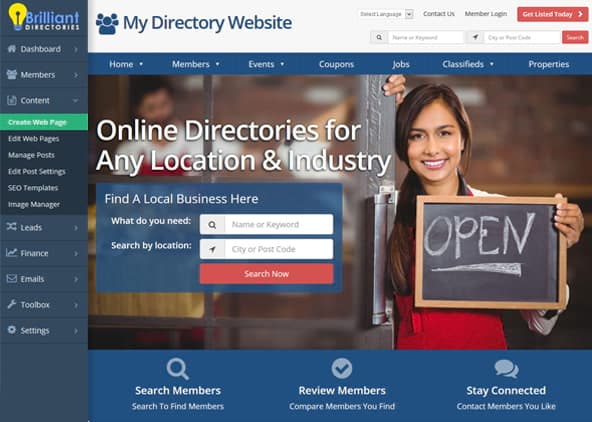
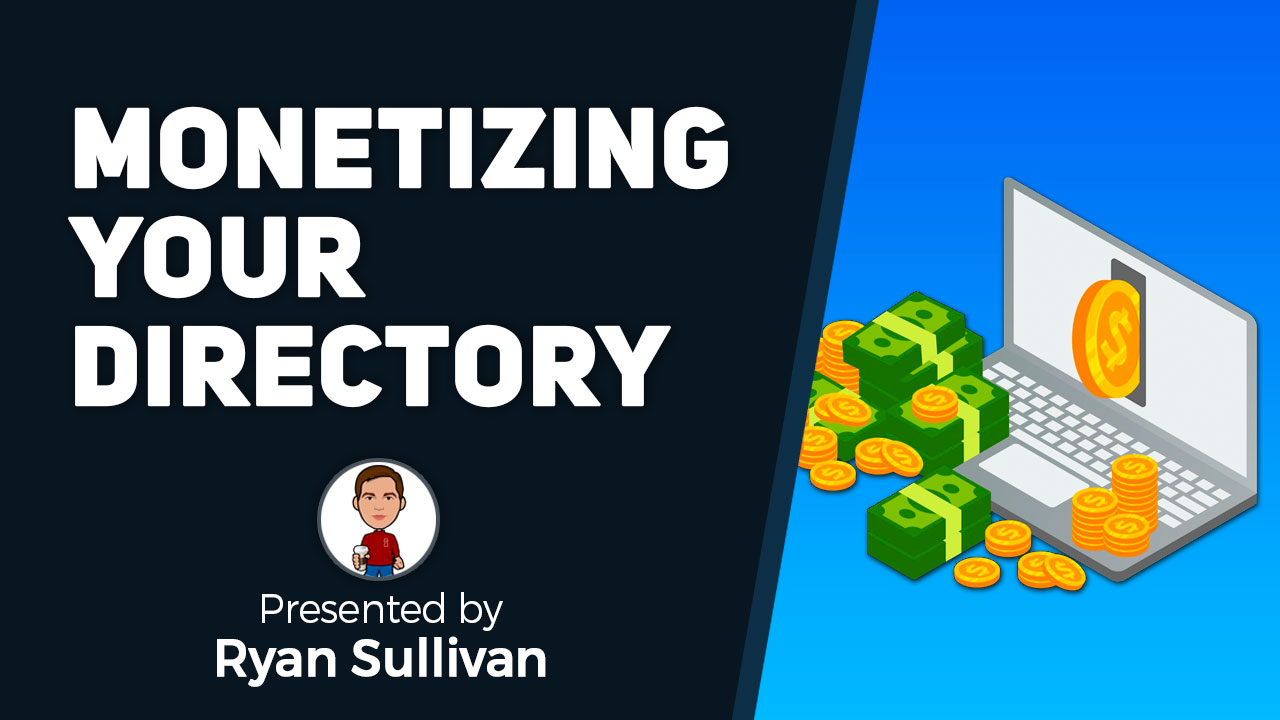
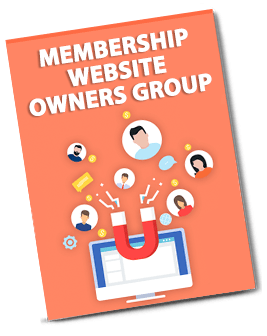

![[INSIDER TIPS] 6 Truths Every Membership Site Owner Needs To Know [INSIDER TIPS] 6 Truths Every Membership Site Owner Needs To Know](https://www.brilliantdirectories.com/wp-content/uploads/2019/06/tips-for-new-membership-directory-website-owner-800x450.jpg)
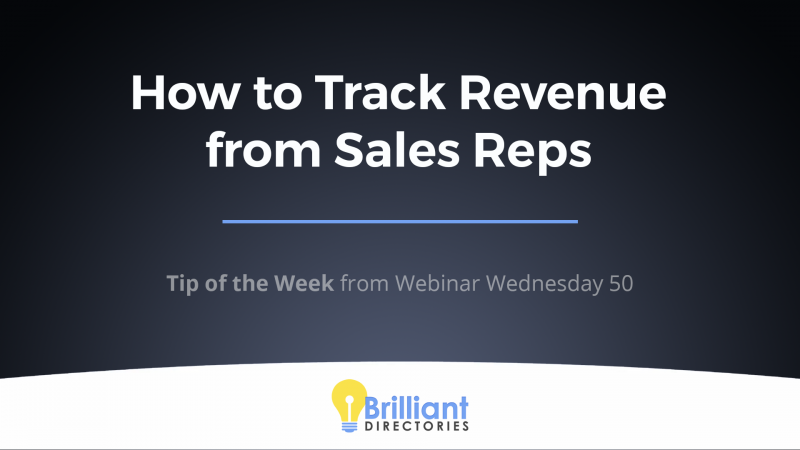
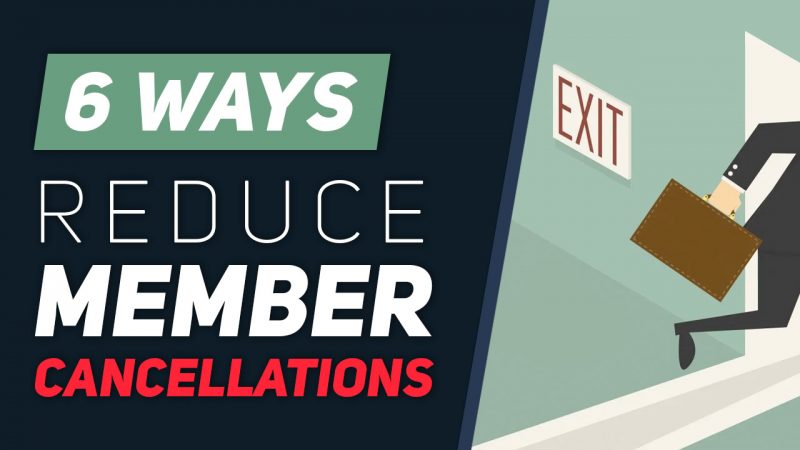
![[FREE TRIALS] 4 Easy Ways to Maximize Member Sign-Ups [FREE TRIALS] 4 Easy Ways to Maximize Member Sign-Ups](https://www.brilliantdirectories.com/wp-content/uploads/2020/07/best-practices-free-membership-trials-800x450.jpg)





